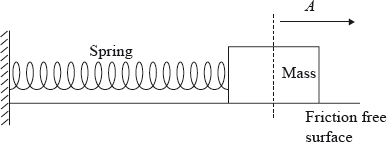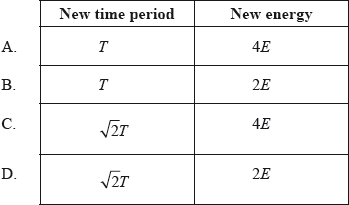| Date | May 2009 | Marks available | 1 | Reference code | 09M.1.SL.TZ1.13 |
| Level | Standard level | Paper | Paper 1 | Time zone | Time zone 1 |
| Command term | Question number | 13 | Adapted from | N/A |
Question
A mass on the end of a horizontal spring is displaced from its equilibrium position by a distance \(A\) and released. Its subsequent oscillations have total energy \(E\) and time period \(T\).

An identical mass is attached to an identical spring. The maximum displacement is \({\text{2}}A\). Assuming this spring obeys Hooke’s law, which of the following gives the correct time period and total energy?

Markscheme
A
Examiners report
The time period is unaffected by a change in amplitude but the energy is directly proportional to the square of the amplitude. A mass oscillating on a spring is not explicitly mentioned on the syllabus but like the simple pendulum, it is an integral component of Simple Harmonic Motion (SHM).

